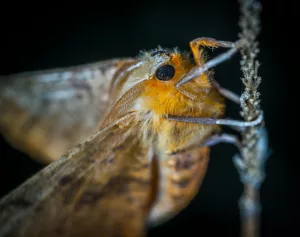Maine, known as the Pine Tree State, is a charming and picturesque destination in the northeastern United States. From its rugged coastline to its stunning natural landscapes, Maine offers a wealth of experiences for visitors and residents alike. Whether you’re planning a visit or just curious about this unique state, here are 16 interesting facts you should know about Maine.
Maine’s Unique Geography
Maine’s geography is a testament to nature’s diversity, offering a blend of rocky coastlines, serene beaches, dense forests, and towering mountains. Its extensive coastline, punctuated with harbors and islands, is more than just a scenic marvel; it plays a crucial role in the state’s economy and lifestyle, supporting fishing and tourism. Inland, the forests and mountains of Maine provide a haven for outdoor enthusiasts and wildlife, showcasing the state’s commitment to conservation and natural beauty. This varied geography not only defines Maine’s landscape but also its people, who have adapted to and cherish their unique natural environment.
Maine’s State Flower: The White Pine Cone and Tassel
The White Pine Cone and Tassel, Maine’s state flower, symbolizes more than the state’s abundant forests; it represents Maine’s history and identity. The white pine has played a crucial role in Maine’s development, from shipbuilding to the timber industry, reflecting the state’s connection to its natural resources. The choice of a cone and tassel as a state symbol underscores the importance of the white pine in Maine’s ecological and economic landscape, celebrating its role in the state’s heritage and future.
Maine’s Capital: Augusta
Augusta, the capital of Maine, embodies the state’s rich history and legislative heartbeat. Situated on the Kennebec River, Augusta’s landmarks, like the Maine State House and the Blaine House, are not just architectural feats but also repositories of the state’s political and cultural narratives. The city’s parks, museums, and historic sites offer residents and visitors alike a glimpse into Maine’s past and present, making Augusta a central figure in understanding Maine’s identity and heritage.
Maine’s Lighthouse Legacy
Maine’s lighthouses are more than navigational aids; they are historical landmarks and symbols of the state’s maritime heritage. Each lighthouse, with its unique design and story, stands as a sentinel over Maine’s rugged coast, offering insight into the lives of those who maintained these beacons and the mariners they guided. The preservation of these lighthouses speaks to Maine’s commitment to its history and the enduring importance of the sea in the state’s life and culture.
Maine’s Lobster Industry
The lobster industry is a cornerstone of Maine’s economy and cultural identity, reflecting the state’s deep ties to the ocean. Lobster fishing, with its longstanding traditions and practices, is a way of life for many Mainers, contributing significantly to the local and state economy. The lobster, renowned for its quality and flavor, has become synonymous with Maine, celebrated in festivals and savored in kitchens around the world, symbolizing the state’s maritime heritage and culinary pride.
Maine’s Acadia National Park
Acadia National Park is a jewel in Maine’s crown, offering a microcosm of the state’s natural splendor. From rugged coastlines to towering peaks, the park is a sanctuary for diverse ecosystems and a playground for nature lovers. Acadia’s scenic beauty, recreational opportunities, and conservation efforts exemplify Maine’s commitment to preserving its natural landscapes for future generations, showcasing the state’s dedication to environmental stewardship and outdoor recreation.
Maine’s Wildlife
Maine’s diverse habitats support a rich array of wildlife, making the state a haven for nature enthusiasts and conservationists. From the iconic moose wandering through the forests to the puffins along the coast, Maine’s fauna is a testament to the state’s ecological diversity and natural wealth. Wildlife watching in Maine is not just a tourist activity; it’s a way to connect with nature and understand the importance of conservation in maintaining the state’s biodiversity and natural heritage.
Maine’s Blueberries
Maine’s wild blueberries are a symbol of the state’s agricultural heritage, thriving in its unique soil and climate conditions. These small but flavorful berries are a testament to Maine’s agricultural resilience and innovation, playing a significant role in the local and national food markets. The cultivation and harvest of wild blueberries reflect Maine’s connection to its land and the importance of sustainable practices in preserving this valuable resource for future generations.
Maine’s History and Culture
Maine’s history, from its Native American roots to its European settlement and beyond, is a tapestry of diverse narratives that have shaped the state’s identity. This rich cultural heritage is celebrated in Maine’s museums, historic sites, and festivals, which offer insights into the state’s past and present. The preservation of Maine’s history and the celebration of its culture are vital in understanding the state’s values, traditions, and community life, reflecting a deep respect for the past and a commitment to the future.
Maine’s Winters
Maine’s winters, characterized by their beauty and severity, shape the state’s character and way of life. The cold months bring not only challenges but also opportunities for winter sports and activities that are integral to Maine’s cultural identity. Skiing, snowboarding, and snowmobiling are not just recreational activities but also part of the state’s economic and social fabric, drawing visitors and fostering community. Maine
‘s embrace of its winter season reflects the resilience and adaptability of its people, who find joy and community in the face of the cold.
Maine’s Fall Foliage
Maine’s fall foliage is a natural spectacle, drawing visitors from all over to witness the vibrant transformation of its forests. This seasonal change is not just a visual feast but also a reminder of the state’s ecological richness and the natural cycles that dictate life in Maine. The annual display of reds, oranges, and yellows attracts tourists, benefits the economy, and provides Mainers with a deep sense of place and a connection to the natural world, celebrating the beauty and transience of life.
Maine’s Writers and Artists
Maine has long been a haven for writers and artists, who find inspiration in the state’s natural beauty and unique culture. The works of Stephen King, E.B. White, Winslow Homer, and others are imbued with the essence of Maine, reflecting its landscapes, people, and ethos. The state’s influence on these creators underscores the power of place in shaping artistic and literary expression, with Maine’s environment acting as a muse for works that resonate far beyond its borders.
Maine’s Maritime Heritage
Maine’s maritime heritage is a core aspect of its identity, reflecting generations of reliance on and respect for the sea. This heritage is evident in the state’s shipbuilding history, fishing industry, and coastal communities, where the ocean remains a central economic and cultural force. Maine’s connection to the sea is a source of pride, tradition, and livelihood, underscoring the state’s ongoing relationship with its maritime environment and the enduring importance of the ocean in Maine’s past, present, and future.
Maine’s Unique Dialect
Maine’s distinctive dialect is a reflection of its cultural heritage, offering a linguistic window into the state’s history and character. The unique vocabulary and pronunciation found in Maine’s speech patterns are not just quirks but markers of identity, tying Mainers to their region and to each other. This dialect is a living symbol of Maine’s cultural continuity and diversity, adding to the state’s charm and sense of place.
Maine’s Maple Syrup
Maine’s maple syrup production is a sweet embodiment of the state’s agricultural traditions and natural bounty. The annual tapping of sugar maples is a ritual that marks the changing seasons and connects Mainers to their environment and heritage. The production of maple syrup, a process that combines skill, patience, and respect for nature, results in a product that is cherished locally and prized beyond Maine’s borders, symbolizing the state’s connection to its land and its commitment to sustainable natural resources.
Maine’s Sense of Community
Maine’s strong sense of community is evident in its towns and cities, where neighbors support one another and collective efforts are made to preserve local traditions and enhance community life. This sense of belonging and mutual care is a fundamental aspect of Maine’s identity, reflecting a lifestyle that values connection, cooperation, and a shared sense of responsibility for the well-being of the community and its environment. Whether through local festivals, community projects, or daily interactions, the sense of community in Maine is a powerful force that binds people together, creating a resilient and vibrant social fabric.



